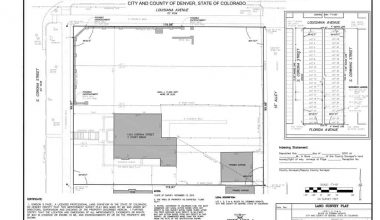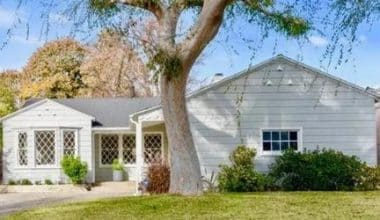A principal residence is a primary location where an individual resides. This post will basically discuss the meaning of a principal residence and the possible main residence exemption you can get in different states, especially in Michigan. It also properly explains how the laws of a principal residence apply differently from state to state.
Principal Residence
The ownership of the property itself does not mean it is a principal residence. Likewise, putting furniture and other personal effects on the property does not necessarily qualify it as being so. For the purpose of tax, the property must be in use for a minimum duration of two years so as to meet some of the qualifications.
This term simply means the primary location where a person inhabits or dwells. It is also called the main residence. It doesn’t matter if it is a house, an apartment, a trailer, or a boat, as long as it is where an individual or family lives most of the time. A principal residence can be in the form of any of the following types of housing units:
- House
- Cottage
- Condominium
- Apartment in an apartment building
- Apartment in a duplex
- Trailer, mobile home, or houseboat
Any of these properties above can qualify to be the main residence for someone. As long as it is your main home or a place you live most of the time, however, you might also own a secondary residence, like a vacation home or cottage. The primary residence is typically where you spend the majority of your time. It is important to understand what your main residence is and how it affects your taxes because it will eventually help you file out and optimize your deductions correctly.
What Is a Principal Residence?
As said earlier, a principal residence is simply the place where you live most of the time, i.e., approximately half of the year. I know a lot of people who typically travel a lot and live in different places at different times. Your main residence is the place where you spend the majority of your time living.
Understanding Principal Residence
In a situation where you visit your parents often, the amount of time you spend there (with your family) is generally the biggest factor in determining your main residence. Another factor is the address you use for official purposes. A principal residence comes into play in several ways. However, the one common way a main property can affect your taxes is in relation to your home ownership.
A major benefit of knowing your main residence is that it could actually make you eligible for a homeowner’s exemption on your property taxes. Although these exemption rules vary by jurisdiction, for example, in California, homeowners are eligible to have a $7,000 deduction from the assessed value of their primary residence. But in a case where you own two homes in the state, you can’t take the exemption on both, even if you and your spouse technically own them separately. In a case like that, your main residence is the one where you and your spouse plan to live permanently.
Principal Residence Exemption Michigan
A Principal Residence Exemption (PRE) is a type of exemption on tax in Michigan. However, to qualify for a principal residence exemption, the person must be a Michigan resident who also owns and occupies the property as their primary residence. The principal residence exemption is a very separate program from the homestead property tax credit. This is because a homestead property tax credit is a program you have to file annually with your Michigan Individual Income Tax Return.
To claim a principal residence exemption, the property owner must submit a Principal Residence Exemption (PRE) Affidavit Form. You have to submit this form to the assessor for the city or township in which your property is located. The former deadline for a property owner to file Form 2368 for taxes levied was after December 31. After filing your details, they then post your exemption information to the local property tax roll.
Understanding Principal Residence Exemption in Michigan
Usually, when you purchase a home, these and other important main residence exemption forms are available through the closing agents. However, note that there are many variables in determining eligibility for the exemption.
In a situation where a person no longer owns or occupies the property as their main residence, the individual must file a Request to Rescind the Homeowner’s Principal Residence Exemption. On Form 2602, with the assessor for the city where the property is located, to remove the PRE. It will be officially removed from the local property tax roll beginning with the next tax year. However, in a case where you fail to rescind a PRE, it may result in additional taxes, interest, and penalties in the future. Under certain circumstances, an individual can qualify for a conditional rescission that allows an owner to receive a primary residence exemption on their current Michigan property as well as one for up to three years.
The Principal Residence Exemption
The principal residence exemption is an Internal Revenue Service provision that allows people who meet certain conditions to exclude up to $250,000 for single filers and up to $500,000 for married filing jointly in capital gains tax from the profit they make on the sale of their home.
In order to qualify for the principal residence exemption, you must pass the ownership and use tests. Also, in order to give the ownership test, you must be the owner of the property you are selling for at least 24 months out of the five years leading up to the date of sale. This is what the IRS defines as the closing date. If you are a married couple, only one spouse can be on the list as the owner of the property for both to pass the ownership test.
If you don’t fully pass the ownership and use tests and have a valid excuse for why you couldn’t stay for the two years, then you can actually qualify for a partial exclusion with the percentage of the exemption directly proportional to the percentage of time you were in your home. Some excuses the agency sees as valid include ones relating to health, work, and unforeseen circumstances.
If the agency approves your excuse and you were in your home for one out of the past five years, then you have met 50% of the use requirement and qualify for 50% of the exemption on gains. In 2023, seniors have no special privileges on capital gains, but there are other exceptions to the two-out-of-five-year ownership and use tests.
More Information on Principal Residence
As I said earlier, a principal residence means a place where an owner of a property has his or her true, fixed, and permanent home. Whenever absent, he or she intends to return to the place and continue to live there until another main residence is established. The main residence of a person has various meanings in different states. Some also see it as only that portion of a dwelling or unit that is subject to Ad Valorem taxes. The principal residence also means, to other states, all of an owner’s unoccupied property in classification as residential, which is adjoining to the dwelling subject to Ad Valorem taxes and also owned and occupied by the owner.
The main residence also means, in other states, any portion of a unit owned by an owner that is rented or leased to another person as a residence, as long as that portion of the unit rented or leased is less than 50% of the total square footage of living space in that unit. The main residence can also include a life care facility for purposes registered under the continuing care community disclosure act. Furthermore, it can be defined in a state as a cooperative housing corporation owned and occupied by tenant stockholders. Any property qualifying as a main residence will continue to qualify as one for 3 years after all or any portion of the property is rented.
Understating Principal Residence in States
Another angle of what the principal residence means to states can also include a dwelling where the borrower and non-borrowing spouse maintain their permanent place of abode and typically spend the majority of the calendar year. An individual can have only one principal residence at any time. They consider the property to be the principal residence of any borrower who is temporarily in a healthcare institution. This is in a case where the borrower’s residency in a health care institution does not exceed 12 consecutive months.
What is a country of a principal residence?
The nation in which you have been given permission to live permanently in your country of residence. For it to be regarded as your genuine nation of residence, you must have resided there for the majority of the previous 12 months.
How do you determine principal residence?
The calculation for the principal residence (PR) capital gains exemption is as follows: capital gain X the number of years that the property has been classified as a PR that are eligible + one year / the number of years held. The property must typically be owned by the taxpayer, who must also identify the years as PR years on their tax return.
What is the legal definition of a principal residence?
According to section 54 of the Income Tax Act (ITA), a principal residence is, in general, any dwelling held by the taxpayer that was used regularly during a given year by that taxpayer or a member of his or her family and was identified as such at the time of sale.
How long do you have to live in a principal residence?
Remember that you don’t have to live in a place for a certain amount of time before it qualifies as your principal residence. This means that the house does not have to be your primary residence if you live there for less than six months or more than a year. Simply comply with the “ordinarily occupied” requirement.
What does the address of the principal residence mean?
A person’s “primary residence” or “main place of abode” is thought to be equivalent to his or her “domicile,” which is the location of their actual, fixed, and permanent home and where they or intend to return whenever they are away.
Can husband and wife have different primary residences?
Taxpayers, including married couples, are only allowed to have one primary dwelling, or “principal home,” according to the IRS. The residence where you typically reside the majority of the time is always your main home.
Conclusion
Although the meaning of a principal residence can differ in different states, you’ve got to see the different definitions of how different states could possibly apply, as well as the process of how to get an exemption in Michigan.
FAQs
What is not a principal residence?
In order for the home to qualify as your principal residence, it must have been owned and used as the principal residence for at least 2 out of the last 5 years. Clearly, if you moved out of your home and it has been on the market for more than 3 years, for tax purposes it is no longer considered your principal residence.
How do I prove my main residence?
To be considered as the main residence for tax purposes, the property must be a dwelling house or an interest in a dwelling house which is, or which at some point during the period of ownership has been, the individual’s only or main residence
What is the difference between primary and principal residence?
Your primary residence (also known as a principal residence) is your home. Whether it’s a house, condo, or townhome, if you live there for the majority of the year and can prove it, it’s your primary residence, and it could qualify for a lower mortgage rate
Related Articles
- Primary Residence: Tips to Avoid Taxes on The Sale of Primary Residence
- Tax Deductions For Homeowners: Top 7 Tax Deductions For Homeowners 2023
- QPRT: Complete Qualified Personal Residence Trust Guide(+Quick Tools)
- Exempt vs Non-Exempt: Best Easy Guide & Differences
- PRINCIPAL PAYMENT: OVERVIEW, TYPES & CALCULATIONS






